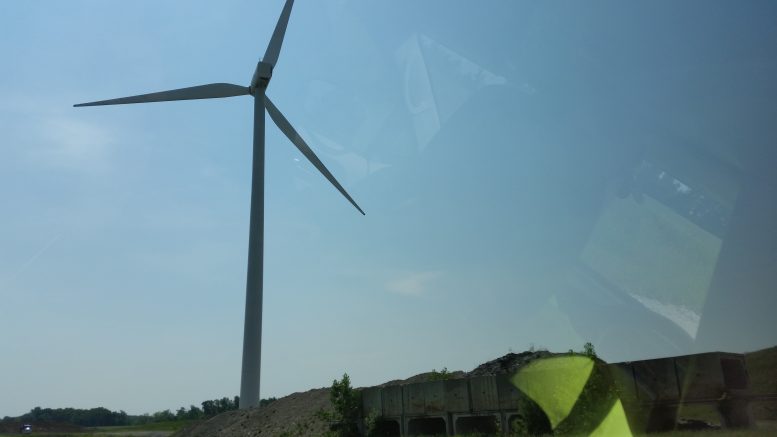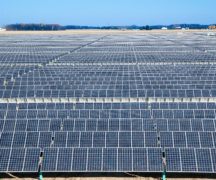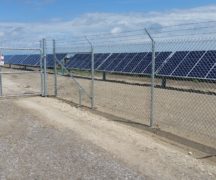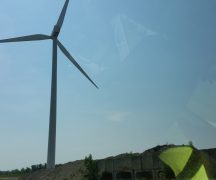By JAN LARSON McLAUGHLIN
BG Independent News
The four giant wind turbines that put Bowling Green on the green energy map nearly two decades ago are becoming dinosaurs.
Though they still turn wind into power, they break down more often and the repairs are much more costly.
“They are getting close to the end of their life,” said Bowling Green Public Utilities Director Brian O’Connell.
The turbines were erected in 2002 and started cranking out power in 2003 – giving the city the distinction of being home to Ohio’s first utility-sized wind farm, located to the west of Bowling Green at the Wood County Landfill. The tall turbines stand out on the flat terrain, making them a local attraction.
The turbines generate up to 7.2 megawatts of power — enough to supply electricity for approximately 2,500 residential customers.
“They are still one of our lowest cost utility operations,” O’Connell said. “Whenever they spin, they make power. They are a cheap source of power for us.”
But in the past couple years, the turbines have had more downtime for repairs. And the fixes aren’t cheap.
“We’ve had a couple of the gearboxes fail,” which can cost up to $500,000 to replace. Plus arranging for a crane tall enough to make the repairs can be time-consuming.
The four turbines are 257 feet tall – as tall as a 30-story building. The turbines rest atop 257-foot towers. With blades that extend 132 feet from the turbine casing, each unit measures nearly 400 feet tall when the blades rotate to their highest point.
“Those kind of cranes that can reach those heights are just not readily available,” O’Connell said.
Even with the downtimes and repairs, the power generated by the wind turbines more than makes up for the expenses.
“That doesn’t mean they’re still not valuable. But at some point, that window runs out,” O’Connell said.
Bowling Green officials aren’t giving up on the wind farm – they are just looking at ways to replace the “dinosaurs” with new high-tech turbines.
The costs are steep.
When the wind turbines were erected in 2002, they cost about $2 million a piece. The cost to replace them with newer models would be about $8.8 million a piece, O’Connell said.
The wind farm is more than a landmark for Bowling Green, it’s a continued investment in green energy.
“I’m certainly interested in keeping something there that will continue that into the future,” O’Connell said.
The newer models are able to generate more power since they have longer blades. And some don’t have the gearbox at the top of the turbines, which make repairs easier. The current wind turbines generate power an estimated 25% of the time, while newer turbines are estimated to produce power closer to 30% of the time.
The city still has two years left on its repair contract with American Municipal Power Inc.
“At some point, we’ll get there. I’ve been talking to AMP about what the next phase looks like,” O’Connell said.
Debt on the existing wind turbine project was paid in full in 2015 – several years earlier than projected.
Since then, Bowling Green has furthered its commitment to green energy by installing the largest municipal solar field east of the city.
American Municipal Power Inc. worked closely with the city of Bowling Green on the development of the wind farm. Bowling Green performed the original wind study that demonstrated the feasibility of the project.
AMP installed an information kiosk at the wind farm site to serve as an educational tool, providing information on the history of the project as well as further details on how the wind turbines operate.
The wind turbines are designed to run when wind speeds range between 9 and 56 mph and are able to withstand wind speeds of up to 133 mph. Optimal output is achieved by the turbines during wind speeds of 31.3 mph, a speed that will rotate the blades on each turbine 16.8 times per minute.
Sensors on each unit constantly monitor wind speed and aid in determining whether the units should be engaged.
For nearly all wind farm installations, winter months provide the most favorable wind conditions and produce the greatest monthly yields. Historical data show the average for the AMP wind farm range from approximately 122,000 kWh per month generated in the summer to approximately 430,000 kWh per month generated in the winter.




